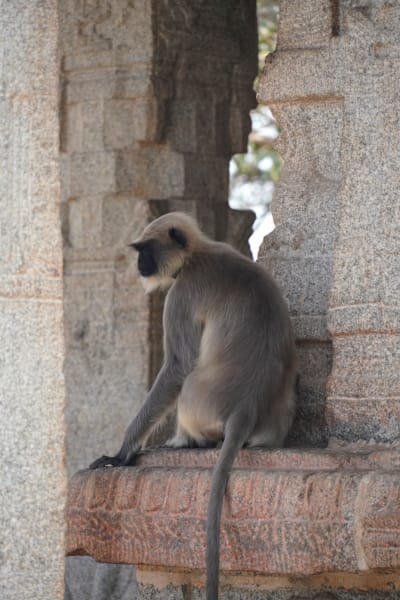Veranda Tales-Sewing machine collects dust

Storytelling has been an integral part of my life since childhood. I grew up listening to stories during the hot summer evenings and nights with my cousins. Mothers and grandmothers would gather all of us children for story time. It was usually pitch dark except for a very faint light coming from the flickering candle. Power cuts were as frequent as the hot and humid summer days. We all spread out on a cool concrete floor or bamboo mats on the veranda intently listening to fascinating stories about kings, queens, princes, princesses, and peasants alike. Stories about love, life, families, and people entertained and taught us life skills. These stories transported us to distant worlds, strange yet familiar. Often the same story told by two people sounded different as storytellers added new twists and turns adding their personal style and flair to the stories.
Storytelling wasn’t limited to summer evenings and bedtime. I was surrounded by adults who didn’t pass up an opportunity to share their wisdom using the art of storytelling. These rich vibrant oral traditions include songs, poems, stories, and సామెతలు (Sametalu are proverbs in Telugu). Men and women sing songs as they work in the fields, grinding grains and spices and doing other daily chores at their homes. Stories are often used to teach important life lessons, interpersonal skills, and survival skills. These stories and the time spent listening to them made our lives richer leaving an impression on me. This series is all about reliving those memories as I share these stories.
కోతికి కొబ్బరికాయ దొరికినట్లు (kothiki kobbarakaya dorikinatlu)
అమ్మ (Amma is mother in Telugu) got her sewing machine when she was a teenager. It was a gift from her father. It was her prized possession that went with her as she moved from house to house, village to village once every two years as father’s job required them to move often. She made sure her Singer sewing machine was oiled and ready for stitching. She stitched blouses, frocks, half skirts, long skirts, underwears, quilts, pillow cases, and blankets for every member of the household including her grandchild for 30+ years. She stopped when she couldn't stitch anymore as her legs hurt when she pedalled the sewing machine with her feet.
She shopped for the right kind of quality fabric going from shop to shop and bargaining to get the best price. She then found patterns for dresses from magazines. She saved dress patterns and embroidery patterns from Femina and other magazines. Femina is an Indian magazine and is the oldest women's english magazine in the country, having been published for almost six decades. She stitched new dresses on birthdays and all the important festivals such as దీపావళి (Deepavali), దసరా (Dasara) and సంక్రాంతి (Sankranthi). She stitched dresses and blouses with బుట్ట చేతులు (Butta Chetulu are Telugu for Puffed Sleeves). She embroidered dresses with beautiful patterns. She meticulously transferred the embroidery pattern onto the fabric using a tracing method. She made a dress for me with a smocking technique that I loved.
Apple fell too far from the tree as my sewing skills are rudimentary and don’t extend beyond sewing by hand. My superior sewing skills were a result of lack of interest and also being away from home at college when I could have learned. When I came home for summer holidays I was more interested in burying my head in books. As years went by I didn’t feel the need to learn. When I buy an item of clothing I really like and it doesn’t fit right, I wish I had the skills to alter it to fit me better. When someone gives me fabric I wish I could make a dress out of it.
Several years ago I embarked on learning to sew experiments. I bought a sewing machine and started to learn. I went to a fabric store to get fabric and patterns. I experimented with stitching for a while. Since I don’t practice often, whatever I learned I forget the next time I bring out the dusty sewing machine. I am not even good at threading the machine. Since this first step frustrates me to no end I give up even before I get started. I am good at sewing by hand through. I made kurtas for my kids for a wedding by hand. It took a lot longer than it would have if I knew how to use a sewing machine, but I channeled and remembered my long lost ancestors who didn’t have the luxury of modern technology. I still stitch by hand and think about how people stitched by hand in candle light to make clothing for themselves.
I admire the ingenuity of Indian clothing that doesn’t require stitching. A saree can be worn without needing to pick up a needle if one chooses to ignore the need for a fall or a blouse. It brings back memories of tribal women who I ran into on city buses in Visakhapatnam on their way to work or going home at the end of the day or to take a dip in the ocean on auspicious occasions. They didn’t bother with pesky clothing such as blouses and petticoats. They looked gorgeous with their weather worn faces beaming with smiles.
“కోతికి కొబ్బరికాయ దొరికినట్లు (kothiki kobbarakaya dorikinatlu)” sameta translates to “monkey find a coconut”. It means what can a monkey do with coconut. Monkey doesn’t know how to break it open and get at the sweet water and meat inside. On a recent trip to Hampi ruins, I watched a young monkey working hard to break a green coconut and giving up after a while. He was hard at work transferring coconut from one hand to another as he intently looked at it. He held it upside down and then right side up. He continued to rotate the coconut a few more times to see how to break it open.
I sat on the steps of the temple sipping water as I watched him try to solve the coconut puzzle. There was another large monkey sitting on the other side of me very close to a neatly broken half of the coconut full of juicy white meat. He didn’t seem to care to grab it. I so badly wanted to tell the young monkey about the coconut half sitting by the large alpha male monkey. As I was still contemplating whether the young monkey could get in trouble if he encroached on the alpha male monkey’s territory to grab the coconut half, the young monkey gave up on solving the puzzle and left.
As I watched the young monkey, I thought about the “కోతికి కొబ్బరికాయ దొరికినట్లు (kothiki kobbarakaya dorikinatlu) sameta and how it is apt to describe me owning a sewing machine. Just like the monkey, I don’t know what to do with the sewing machine. It collects dust as I continue to stitch by hand.

